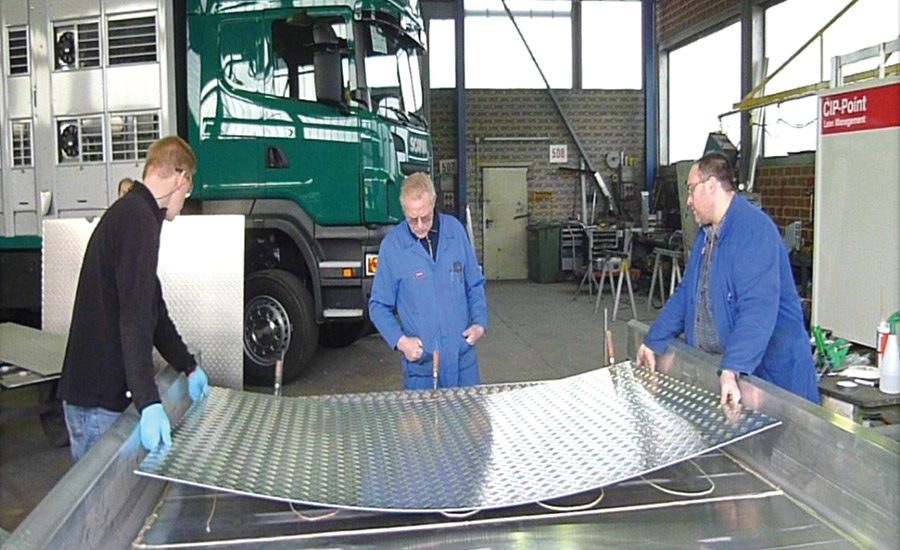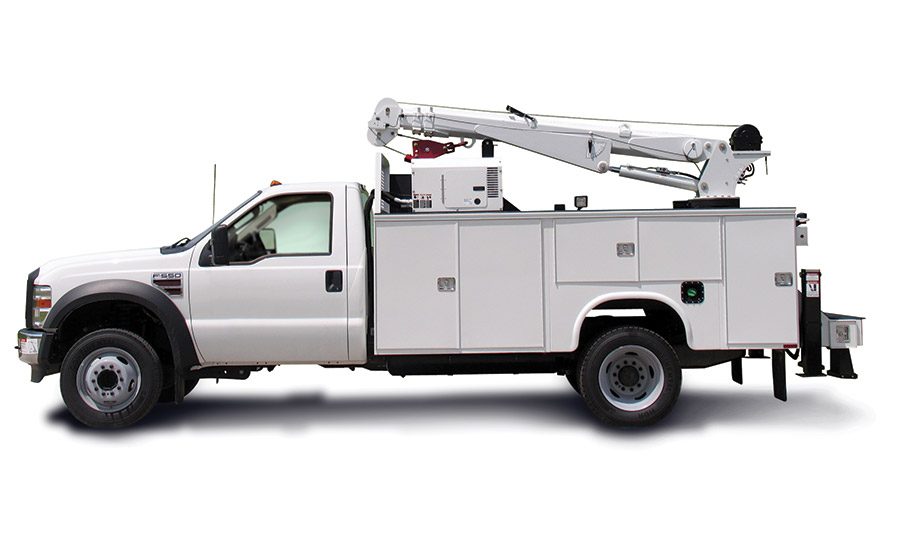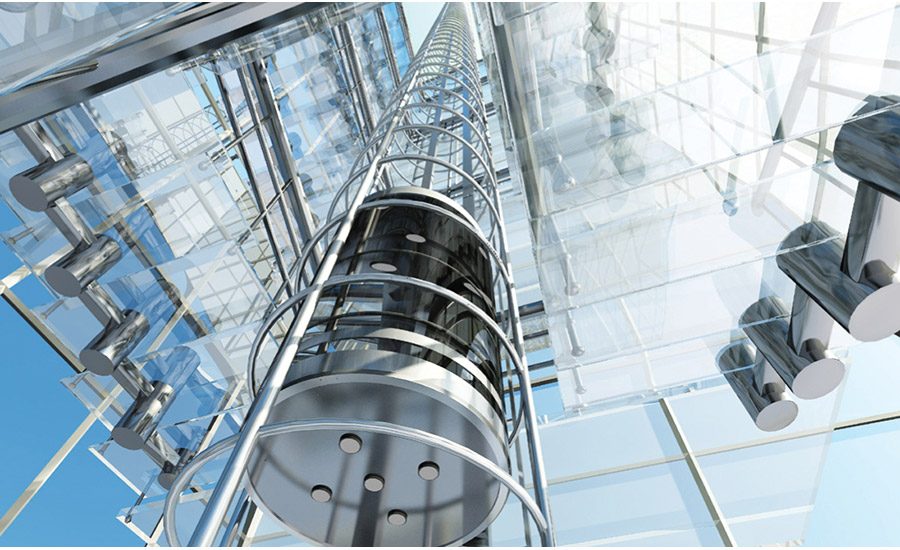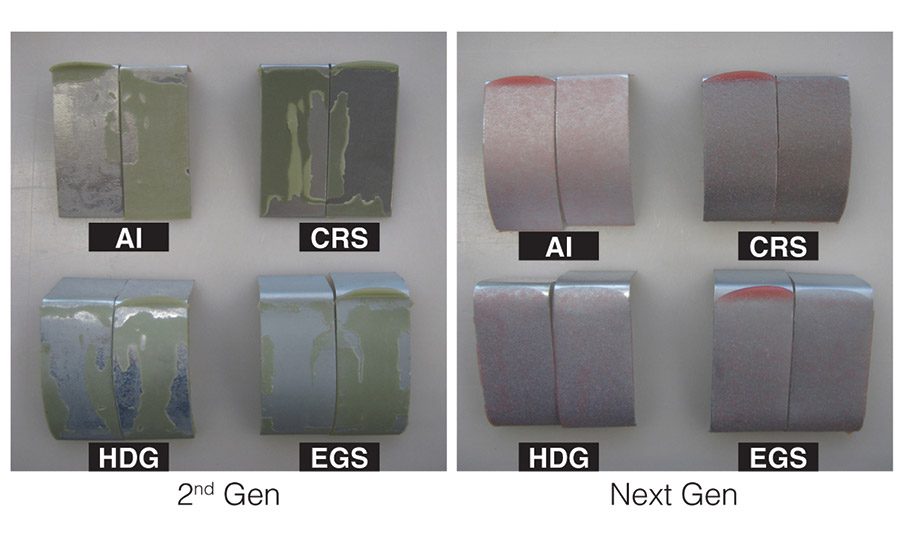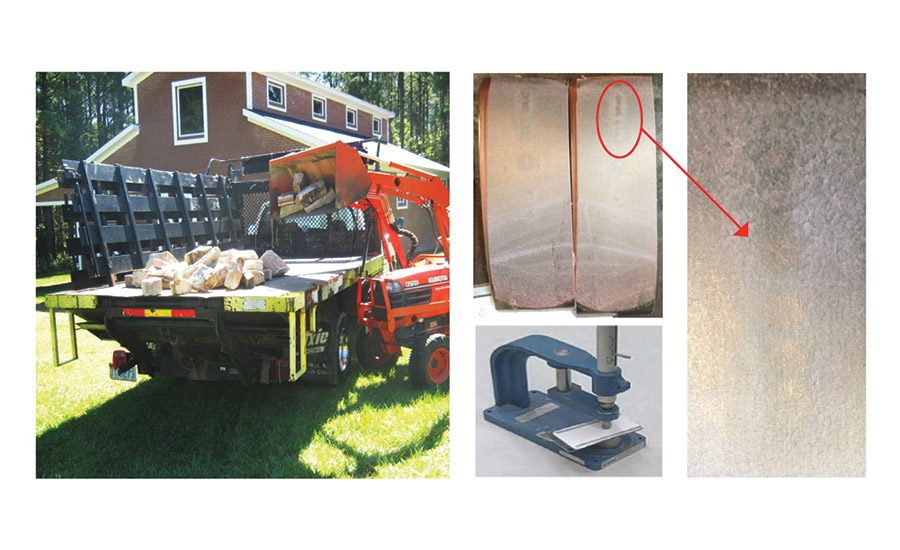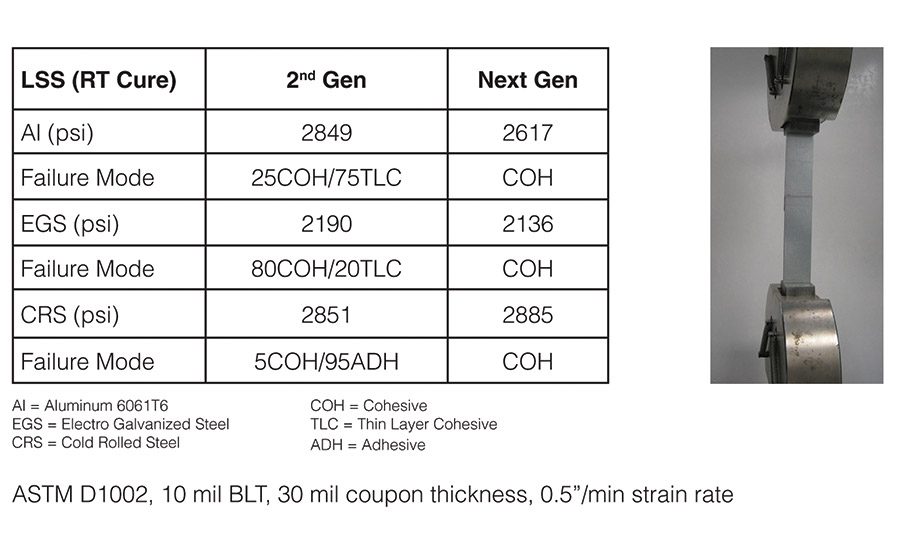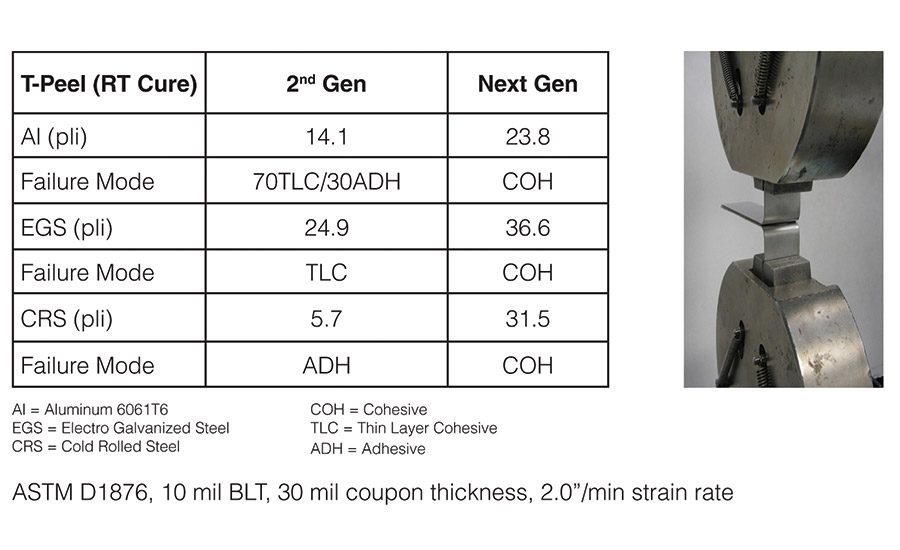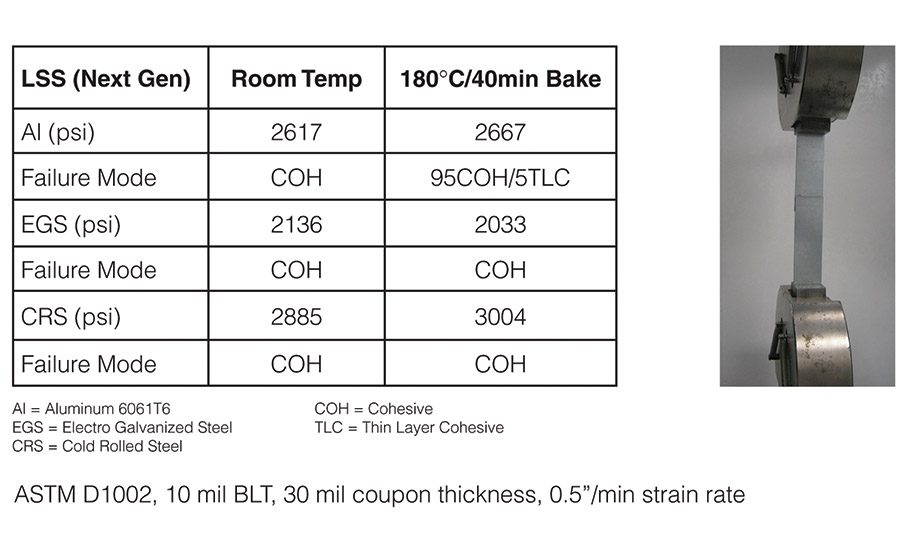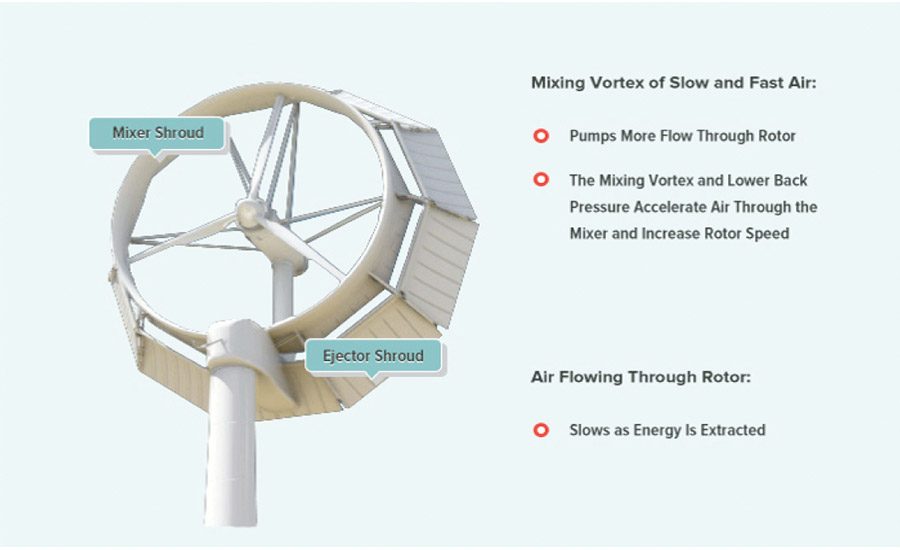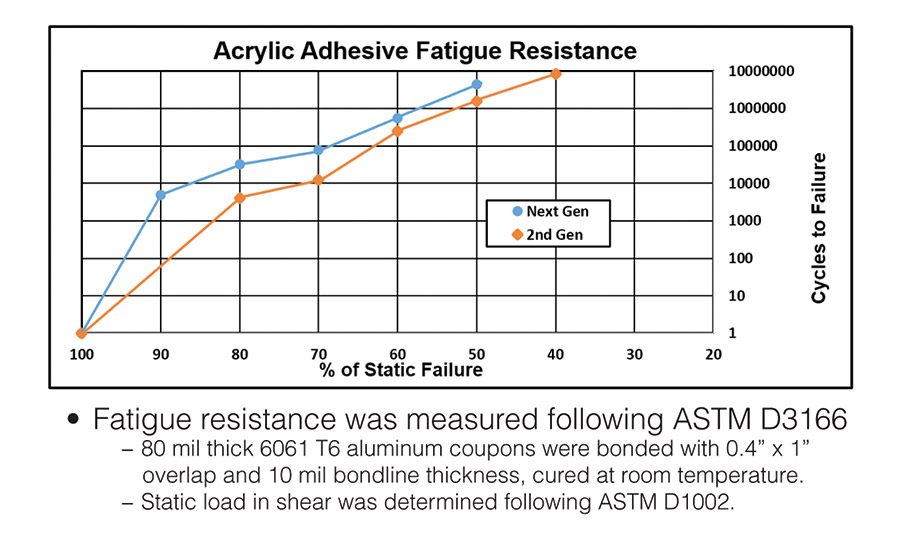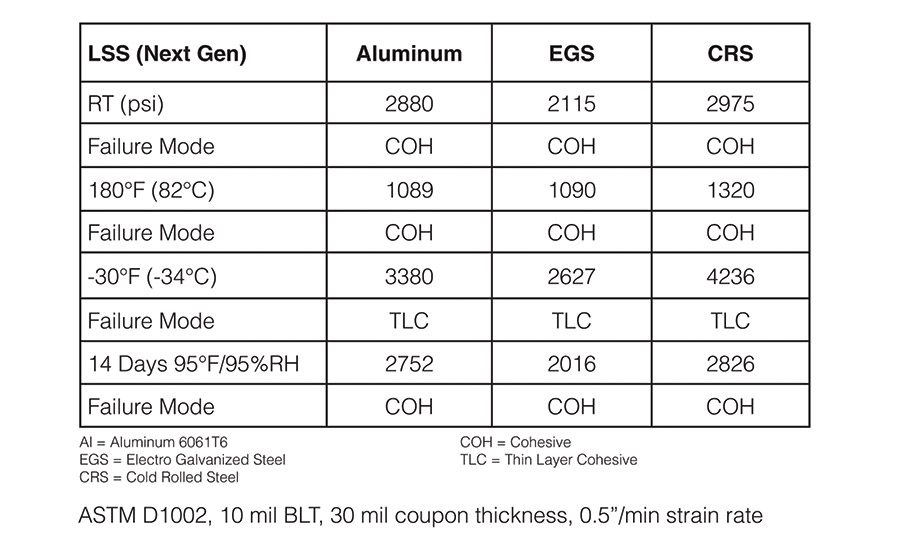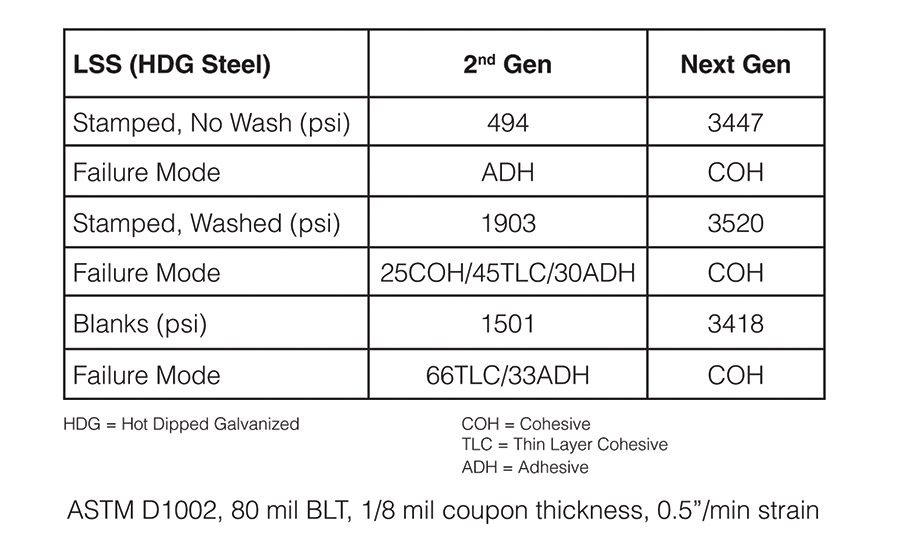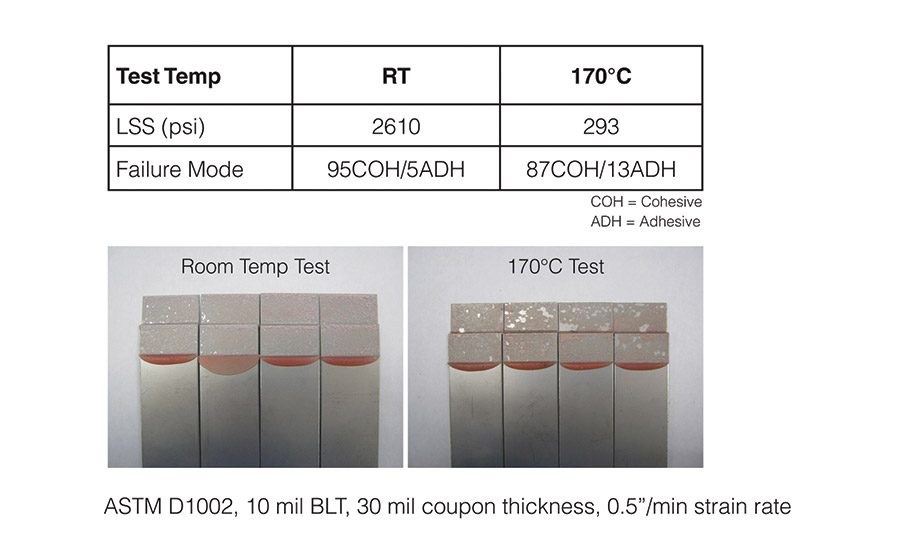Acrylic adhesives offer the advantages of increased cost efficiencies, better aesthetics and improved impact resistance compared to other methods for the assembly of complex structures. Recently, new acrylic technology has been developed that offers superior lap-shear strength, high elongation and high bake resistance, as well as excellent failure mode across difficult-to-bond metal substrates. These “next-generation” acrylic adhesives are ideal for meeting the rigorous demands in various manufacturing and fabricating segments, including commercial vehicles, wind and energy equipment, and industrial equipment.
Acrylic structural adhesives are two-component systems (comprising an adhesive and an accelerator) that deliver bond strengths that can approach or exceed the strength of substrates. Significant commercial use of acrylic adhesives began in the 1960s. “First-generation” systems were brittle and generally used for plastic bonding.1 They featured poly-methyl methacrylate dissolved in methyl methacrylate (“syrup”) and an accelerator “lacquer” used at a high mix ratio.
“Second-generation” acrylic structural adhesives were developed in the 1980s and have delivered effective bonding performance in a variety of commercial applications over the last 30 or more years. These systems were tougher, and offered improved low-temperature performance and improved bonding to bare metals. They featured butadiene rubber tougheners, metal adhesion promoters, and 1:1 and 4:1 mix ratios with formulated accelerators.
Adhesive Evolution
Next-generation acrylic adhesives have evolved to offer increased performance for more demanding applications. Key features of these adhesives include advanced terpolymer and core-shell rubber tougheners, blends of polymerizable monomers, and a 10:1 mix ratio. Enhanced performance characteristics include:
- High lap shear strength—targeting structural bonding applications
- Improved peel strength—better performance for applications with mixed-mode stresses
- Outstanding failure mode across a wider variety of substrates—more robust performance increasing usability for multiple applications
- High impact-resistance—suitable for rugged applications where impacts may/will occur
- Improved fatigue resistance—holds up better under cyclic stresses or vibrations
- Excellent low-temperature performance—important for use in challenging climates
- Resistance to e-coat, paint and powder-coat bakes—bonding parts will not shift/separate during bake process and will maintain high lap shear strength after bake
Registration, Evaluation, Authorization and restriction of Chemicals (REACH)-friendly formulation (Europe)—elimination of toxic components for global use acceptance
Acrylic adhesives offer distinct advantages over metal joining techniques such as riveting or welding, most particularly in durability, fatigue resistance, distribution of stress, aesthetics, corrosion resistance, and process simplicity/cost. They have been used successfully in bonding applications to replace riveting and welding. Acrylic adhesives are also ideal for use in joining applications where mechanical fastening may not be feasible or practical, such as plastic and composite bonding.
Improved Performance
One important difference in physical properties between next- and second-generation acrylic adhesives is a significant increase in elongation (≥ 100%) while maintaining the same high tensile strength (≥ 18 MPa). This increase in elongation without loss of tensile strength is key to many of the elements in improved performance for next-generation acrylic adhesives.
Another element of improved performance for the next-generation acrylics, one that is most visible to fabricators, is the more robust performance across various, difficult-to-bond metal substrates. Tables 1 and 2 show comparisons of the lap shear and T-peel bonding performance for a second-generation acrylic adhesive and a next-generation acrylic adhesive. All things being equal, lap shear strength is primarily a reflection of the tensile strength of the adhesive, whereas good peel performance requires more toughness and elongation. The bonding results show equivalent lap shear strengths, while the more flexible next-generation adhesive demonstrates a clear improvement in the T-peel strength. The significant improvement in failure mode with the next-generation adhesive should also be noted.
For fabricators, confidence in adhesion is greatly enhanced by seeing good cohesive failure when bonded parts are separated, especially if there is an even distribution of adhesive between the two surfaces. Being able to achieve this good adhesion on multiple substrates with a single adhesive is also of great value, reducing complexity in assembly and reducing the risk of mistakes if forced to use multiple adhesives.
Figure 1 provides a visual comparison of the failure mode between different metal substrates bonded with a second-generation acrylic adhesive and a next-generation acrylic adhesive, with the samples pulled in T-peel. The consistent, uniform failure mode of the next-generation adhesive, when added to the impressive bond strength data, creates greater confidence in the robust performance of the adhesive.
Application: Utility Truck Bed Assembly
A truck bed was redesigned to accommodate the use of adhesives as an assembly mechanism, gaining advantages in processing time, aesthetics and cost. A more flexible acrylic adhesive was targeted to provide the impact resistance needed for the demanding performance requirements of the dump-bed design.
The previous dump-bed design required welding for assembly. However, welding is an expensive and time-consuming process, especially with non-ferrous or coated metals. Adhesives offer a much easier assembly method, requiring significantly less training and simpler equipment for application. Furthermore, bonded assemblies are more aesthetically pleasing, since they eliminate the unsightly weld deformations in the truck bed. With adhesives, the flat panels maintain a pristine and smooth cosmetic appearance with no weld marks.
Meeting the Challenge
The truck bed manufacturer wanted the option of using one of three metal substrates—aluminum, galvanized steel, or Aluzinc® (an aluminum-zinc-alloy-coated steel)—for fabricating the dump beds. Aluminum was desirable for its lightweight and corrosion resistant properties; however, it is also more difficult to weld. Galvanized steel can be more difficult to bond than aluminum, and many acrylic adhesives do not adhere or cure well on this coated metal. Aluzinc is even more challenging to bond, since this coating tends to cause variable bond performance even with the best of adhesives.
Ideally, the manufacturer was looking for one adhesive that could be used for bonding all three metal substrates, avoiding the complication of managing multiple adhesives in the assembly process. It was important that the adhesive did not release or delaminate even under extreme use conditions, including indentation and deformation of the dump-bed. Any adhesive used also had to be able to handle a high-temperature paint-bake process, which would be performed after assembly.
The next-generation acrylic adhesive was able to deliver excellent bond performance, with cohesive failure mode on all three metal substrates for the dump-bed application. The room-temperature-cured adhesive also demonstrated the ability to withstand the paint/powder-coat bake temperatures of 180-200°C without degrading the bond performance of the assembly.
Proof Positive
Several tests were performed to prove the efficacy of the acrylic adhesive for the truck assembly process:
- Impact resistance testing. This test demonstrated that sharp impacts hard enough to cause deformation of the substrate did not cause brittle delamination of the adhesive, and that the subsequent failure mode in tear-down was 100% cohesive. The result proved that the frame could withstand the impact from heavy objects thrown into the truck without having the frame separate from the bed (see Figure 2).
- Bake resistance testing. This test demonstrated that the lap shear strength and the failure mode were not altered during the baking process. Table 3 shows data for testing on various metal substrates in a 180°C/40 min paint bake. Additional testing demonstrated no significant change in lap shear strength during a 200°C bake for up to 90 min on aluminum substrate. This was a significant achievement, since bake resistance had previously been a significant challenge for 10:1 acrylic adhesive systems.
- Environmental resistance. This test demonstrated that the adhesive bond performance remained robust under challenging environmental conditions. Since the vehicles must operate in all types of weather conditions―from warm and humid to freezing temperatures―the adhesive performance must be designed to match. The next-generation acrylic adhesive was able to retain excellent bond strength on various metal substrates when exposed to environmental extremes (see Table 4, p. 30).
Application: Service Truck Body
For this application, a manufacturer was looking to reduce weight and improve the assembly process, durability, and aesthetics in its truck bodies and truck beds. The company wanted to accomplish these goals by switching to a lighter-weight substrate for the truck bodies. However, the substrate, although lighter in weight, was more difficult to weld, so this manufacturer wanted to evaluate the use of adhesives for joining as an alternative to welding.
The manufacturer had some previous experience with adhesives, since they had been used successfully in the assembly of truck-body doors. However, the adhesive use had been limited to steel applications, and had not been attempted on lighter weight, less ductile materials. The company needed to be convinced that an adhesive could handle the stress loads of the truck chassis or withstand the high-bake finishing process.
Passing the Tests
The company tested several types of adhesives, including next-generation acrylic adhesives. Some of the adhesives were too rigid and not flexible enough to maintain bonding strength. Although many of the adhesives met some of the design criteria, only a next-generation acrylic adhesive was able to meet all the requirements.
In one of the test procedures, a torsional tester was fastened onto the front and rear of a truck bed, and the bed was then systematically twisted back and forth in opposite directions. This test was designed to prove whether the adhesive could hold up over an extended period of use/time, and if any stress cracks would develop in either the bond line or the assembly. Although one of the adhesive products tested did not fail bond-wise, it was so rigid that it eventually caused the development of stress cracks on the truck body. However, the next-generation acrylic adhesive was strong, tough and flexible enough to hold up to the torsional twisting test motion without causing any collateral damage.
The next-generation acrylic adhesive also passed the required high-bake test. While other adhesive candidates fell apart during the high-temperature e-coat process, the next-generation product maintained structural integrity without any degradation while going through the rigorous procedure.
Additional advantages of using the next-generation acrylic adhesive were time and labor savings in the finishing process, compared to welding procedures. Once a piece has been welded by a skilled technician, significant additional labor and time go into grinding and sanding welds to achieve a smooth, “finished” look. With the next-generation acrylic adhesive, which can be applied with simple manual or automated dispensing equipment, these grinding and sanding operations are eliminated, since the adhesive will not mar the outside of a finished piece.
Application: Wind Tower Assembly
For this application, the next-generation acrylic adhesive was qualified for use in building wind towers. Due to its excellent failure mode on tough-to-bond substrates, the adhesive proved to be ideal even for the hybrid bonding―aluminum to hot-dipped galvanized metal―needed to manufacture wind tower shrouds. Figure 3 depicts the wind tower assembly.
The application involved very large parts, bringing the additional challenge of variable bond-line thickness across the length of the assembly. A key adhesive attribute required by this manufacturer was high fatigue and environmental resistance, allowing the wind tower shrouds to operate long-term under extreme conditions of vibration, heat and cold temperatures, and environmental exposure. High elongation and high strength were other important properties that the adhesive had to exhibit.
For the hybrid bonding, the adhesive had to handle a high coefficient of thermal expansion (CTE) mismatch between the different metals. Steel and aluminum expand at different rates as temperatures change, and this “mismatched” expansion can put extreme stress on bonded parts. An adhesive must be both strong and flexible enough to tolerate the stresses that are created by a CTE mismatch. Compared to second-generation acrylic adhesives, the next-generation acrylic adhesive offered higher fatigue resistance, allowing it to withstand the expected conditions during the wind tower’s operation. The acrylic’s high elongation, high strength and excellent adhesion across different metal substrates made it an ideal choice.
Several tests were performed to prove the efficacy of the next-generation acrylic adhesive for the wind tower application:
- Failure mode robustness test. This test proved that the acrylic adhesive offered robust performance across a variety of substrates. It showed that the
- next-generation adhesive offer improved functioning compared to second-generation adhesives in bonding difficult-to-bond substrates (see Table 5).
- Fatigue resistance test. In this test, the next-generation adhesive demonstrated improved fatigue resistance compared to previous generation (see Figure 4).
Application: Elevator Assembly
In another application example, a manufacturer of industrial elevators was looking for an adhesive that offered not only excellent bonding performance, but could also support global manufacturing efforts. The elevator assembly parts were comprised of galvanized steel and 304 stainless steel. This application required an adhesive that could provide excellent adhesion to these difficult-to-bond substrates without surface modification, including cohesive failure at high temperature. Excellent high-temperature adhesive performance was important to the manufacturer due to a concern that bonded parts might slide or separate as they were racked and conveyed through the paint-bake step of the automated production process. The next-generation acrylic was able to provide this superior performance (see Figure 5).
In addition, this manufacturer needed an adhesive that provided good shelf life and met compliance regulations to support global manufacturing. The competitive adhesive had a shelf life that was limited to two months, causing shipping and storage problems for use in any location outside of its origin. To minimize production complexity, the manufacturer desired use of a single adhesive globally.
The next-generation acrylic adhesive had the shipping and storage stability, and met the compliance regulations needed to support this customer’s worldwide manufacturing efforts. It was developed to meet the increasingly strict requirements of global environmental regulations, eliminating components that would conflict with REACH requirements, for example. The adhesive can be shipped to various locations throughout the world and still be usable once stocked in local manufacturing facilities.
Adhesives for Assembly
Acrylic adhesives offer distinct advantages over other fastening methods, such as riveting and welding, including improved cosmetic appearance and distribution of stress for increased impact and fatigue resistance. Next-generation adhesives have evolved to offer improved elongation, impact resistance and fatigue resistance, plus excellent high and low temperature performance and more robust bonding
to a wider variety of substrates. These benefits make next-generation acrylic adhesives an attractive assembly choice
for manufacturing and fabrication applications. ASI
For more information, visit www.lord.com.
Reference
1. Handbook of Adhesive Technology, 2nd Ed., 2003, Ch. 38.
